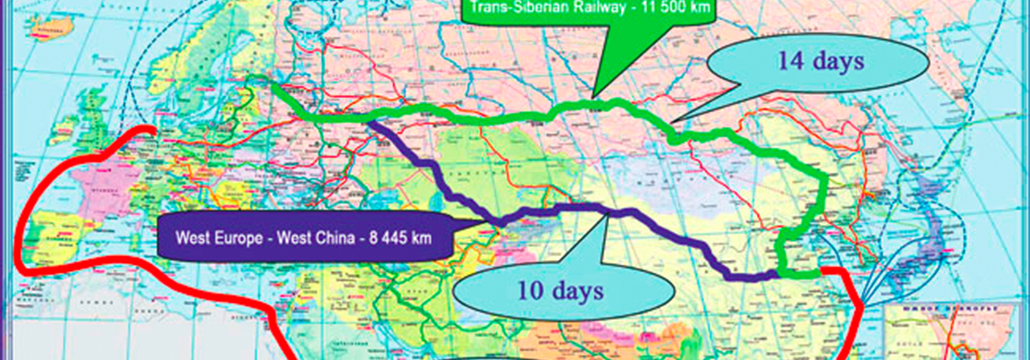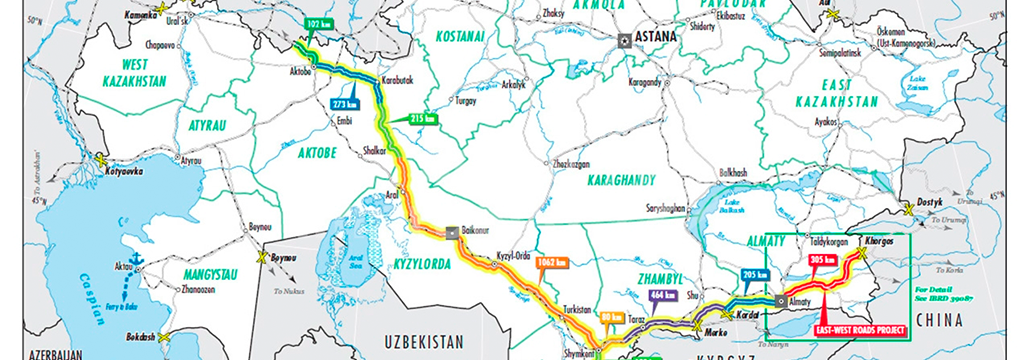Kazakhstan Road Corridor Assessment
Place: Kazakhstan– Dates: 2008-9 – Partner: ADB
Project Summary
ADB is engaged across the Central Asian region for infrastructure and other projects to facilitate economic growth and regional integration. Included among these is a large road network project in Kazakhstan. As Figure 1 indicates, this project implicates not only many regions of this country (the world’s seventh largest by land area), but also its major trade routes to neighbouring and more distant trading partners. Like many large projects, the costs and benefits of this will be complex and dispersed over time and across domestic, regional, and even global stakeholder groups. Using a new modeling facility beings developed for the Central Asian Region (CAR), we examine the growth effects of the project over the period 2008-2030.
The Kazakhstan road corridor project is very large in the early years, with negative gross net cash flow exceeding 8 percent of GDP in the second year, and in excess of 5 percent in each of the first four years (Table 1). The significance of direct project finance tapers off sharply after this, but the economic value of the transport and distribution services this corridor provides, including collateral investments around the corridor, will continue to grow in both absolute terms and relative to the rest of the country, where infrastructure services are generally inferior to those provided by this project. The primary objective of this analysis is to elucidate these complex and far-reaching indirect effects, by which the project exerts economic growth leverage across Kazakhstan, CAREC generally, and via trade to even more distant regions.
Most Recent Entries

Low Carbon Biomass Conversion in the Sierra Nevada





